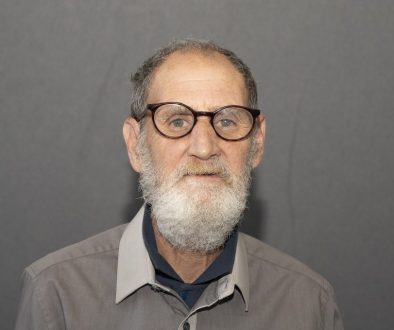What coronavirus can tell us about forensic DNA
The following fascinating article is published on the website of our friends at The Forensic Institute, here in Glasgow. Written from the perspective of forensic science, it assists in our understanding of the mechanics of DNA transfer, and the evidential implications of that. These implications are often significant in the work that we do at MOJO. Topically, however, it also has something to tell us in these days of social distancing. It’s well worth a read.
For some years now, we have been trying to explain to juries that the term ‘touch DNA’, as some prosecution-minded people call it, is a myth; or a misnomer; but definitely misleading. Maybe the current coronavirus pandemic ironically provides some useful information in the forensic DNA context.
Breathing, talking, sneezing, and coughing all produce aerosols. These aerosols are suspensions of small water droplets in the air. But they are more than water. They can include cells from the body such as skin cells, electrolytes (e.g. Na+, K+, Cl-), as well as, potentially, various infectious agents (e.g. bacteria, fungi and viruses). Forensically, we are usually interested in the cells from the person from which we can produce a DNA profile. However, like those concerned with disease transmission, we are also interested in how these aerosols move and deposit their contents in the environment.
As long ago as 1934 Wells proposed a formula to calculate “Wells evaporation–falling curve of droplets”. Basically, as a water droplet flies through the air it is evaporating as well as falling, with larger droplets taking longer to dry to become ‘droplet nuclei’. A droplet nucleus is what was in the droplet in the first place such as infectious agents minus the water. The size and number of droplets varies enormously between people and the activities. For example, sneezing may generate 40,000 droplets, coughing may produce up to 3000 droplet nuclei; about the same number as talking for five minutes. Droplet speeds may be up to about 100 metres per second (over 200 miles per hour). Some individuals may exhale more droplets with more cells or infectious agents and may be “super-spreaders” — infecting many more others than the average.
These aerosols will contain a range of droplet sizes, whose motion will depend significantly on various environmental factors, such as gravity, the direction and strength of local airflows, temperature and relative humidity. The latest research suggests that the distance that such aerosols can travel may be much greater than 2m – as far as 6m (18 feet) – with the perhaps obvious conclusion that actions such as coughing or sneezing achieve the furthest spread.
As early as 1979, forensic scientists were realising this was important and investigating how saliva can get on to surfaces. Figure 1 shows saliva staining on a jacket and T-shirt simply through normal wear[1]!

Notice the back of the garments. Difficult to get your own saliva down your own back. They found every garment that they tested had saliva stains. Pockets, collars, cuffs, and ‘intense’ saliva stains on the upper front.
These researchers reported

Saliva, when it’s produced, is just a clear liquid. That liquid is a complex mixture of chemicals; sometimes even with anti-viral components. But the salivary tracts and mouth add other components like buccal cells (the usual source of most DNA from saliva stains) and those cells can contain viruses as well as the DNA the forensic scientist is looking for. Up to 90% of the DNA in saliva is non-human.
More up to date, but still a good time ago, other forensic researchers conducted experiments to see just how far saliva could travel just by talking. A surprisingly long distance as it turned out; although maybe it shouldn’t have been such a big surprise given the earlier work. Here is how saliva can be spread just by talking[2]:

These researchers, based at the University of Leicester in the UK (where Alec Jeffreys pioneered the first form of genetic ‘fingerprinting’) showed that saliva could travel over a metre from someone speaking for only 30 seconds. Add to that the potential effect of wind, or a draught, and 2m actually doesn’t seem very far when considered in the light of the latest research on droplets.
Now of course, once the saliva gets onto things, the next question is how long can it stay there. Well of course that is also of interest to forensic science. Arising from the growth of the use of DNA profiles to identify assailants, researchers were interested in how long DNA from saliva could last on the skin of victims. Up to 96 hours; without washing, but wearing clothes normally.
So not only is it easy in normal activities to get saliva and all its contents on to things, including skin, once it’s there it can last a long time.
So, this research tells us;
a. 2m is a guide and not a wall against saliva
b. frequent washing is essential to reduce persistence of saliva, and its consequences
c. masks cut down (or eliminates) transmission of saliva from the wearer to the environment
d. when people talk of ‘touch DNA’, touch is not the only explanation, and is inappropriate as a label.
[1] Rushton et al 1979 J.Forensic,Sci.Soc. 19, 53
[2] From Port et al 2006 Forensic Science, Medicine and Pathology 2:3 157
The original article can be found HERE.

![16[2]](https://mojoscotland.org/wp-content/uploads/2024/06/162-1024x768-394x330.jpg)

